What Is Nearbyme.io Mac Virus?


Nearbyme.io is a web browser extension for Safari and Google Chrome. Mac users who install this extension risk infecting their computers with a redirect virus. Redirect viruses can be difficult to remove. In this post, we’ll provide a guide for removing Nearbyme.io and a virus protection tip to help ensure your Mac is safe from future threats. Nearbyme.io is a browser extension that’s installed in order to overlay content on websites you visit—most often advertisements (hence the name “adware”). This can result in some websites appearing entirely different than usual. The website for Nearbyme.io claims it is a useful extension that provides you with “saved locations, real-time search, nearby places, [and] personalized deals.” However, many users complain that they didn’t install the extension but they’re still seeing advertisements while browsing the web. This leads to suspicions that the extensions was installed without their knowledge.
How Is Nearbyme.io Mac Virus Distributed?
To be installed on a Mac, the virus needs to be downloaded and saved to the computer. This can be done through a browser extension, a third party downloader, or web page links. The virus can also be directly downloaded from the infected web page, through spam email attachments such as .zip files, or redirected from other websites. Nearbyme.io was first distributed via adware distribution sites such as uptodown and blurbusters. Once installed, it will often try to display advertisements in your browser. Sites displaying content from the adware will be altered to display links to advertisements or web content unique to the affected computer.
How harmful is Nearbyme.io hijacker?
In order to get rid of this hijacker for Mac, you will need to perform a malware scan on your Mac. Once you have it running, it will scan your computer for infections and provide a list of all threats. Select the viruses and click the remove button. You may need to restart your Mac at this stage, so please ensure that you have enough disk space available before attempting a scan. You should also note that you will need to repeat the entire process if you want to remove any other threats on your Mac.
How did I get infected?
We do not know how you were infected with this virus. You could have been infected either by following a malicious URL or a fake app download link. Your Mac may also have got infected if it is currently running a malware infection at the time of reading this article. For instance, if you have installed malware via an infected website, downloaded a pirated app, or downloaded and run an infected program while it was on a compromised Mac. How do I know if my computer is infected with Nearbyme.io?
If you are worried that your Mac may be infected, you can download and run the free version of SpyHunter. If it finds malicious files on your system, it will let you know on screen. You can also click here to check for malware remotely by creating a free account and entering your email address.
How can I Remove Nearbyme.io virus ?
Step 1: Uninstall Nearbyme.io and remove related files and objects
- Open your Finder –> Click on GO –>Click on Utilities
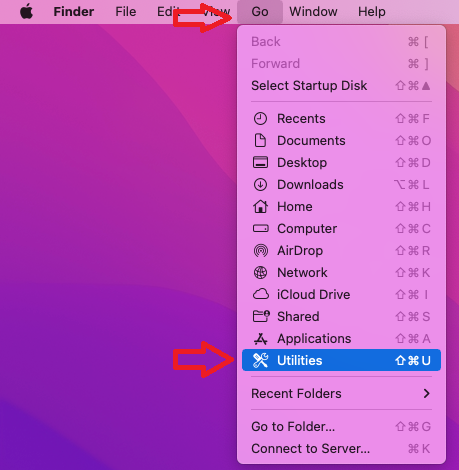

- Find Activity Monitor and open it


- Review all the processes in Activity Monitor and write down the ones related to Nearbyme.io virus
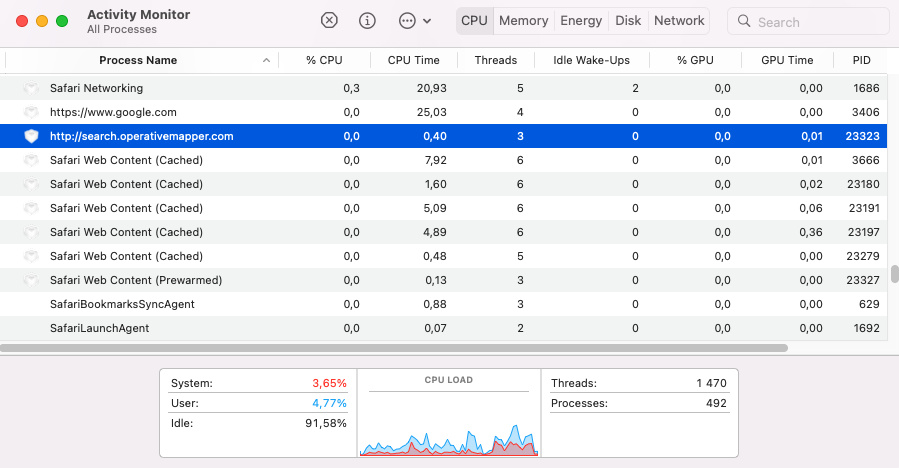

- Select Quit
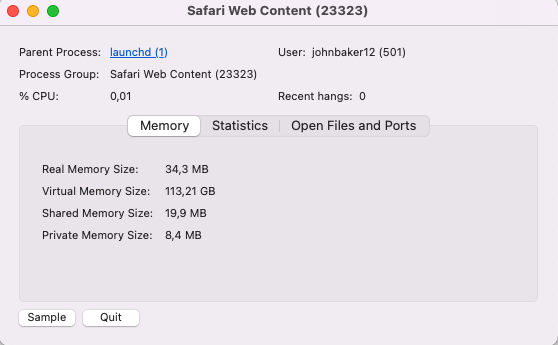

- To kill the malicious process, choose the Force Quit option.


Step 2: Remove Nearbyme.io – related extensions from Safari / Chrome / Firefox
The first thing you need to do is to make sure Safari is not running. If you have troubles closing it, you may need to Force Quit Safari - (Start Activity Monitor by opening up Finder, then proceed to Application --> Utilities --> Activity monitor. Locate the Safari process and force quit it.
Safely launch Safari again by holding the Shift key and clicking on the Safari application icon - This will prevent Safari’s previously opened malicious web pages.
In case that you still are having trouble with scripts interrupting the closing of unwanted pages, please do the following:
- Force Quit Safari again.
- Disconnect form Internet and try again.
Then Re-Launch Safari but don’t forget to press and hold the Shift button to prevent pop-ups. Then, click on Preferences.


- Carefully take a look at your default home page and change it if the hijacker altered it.
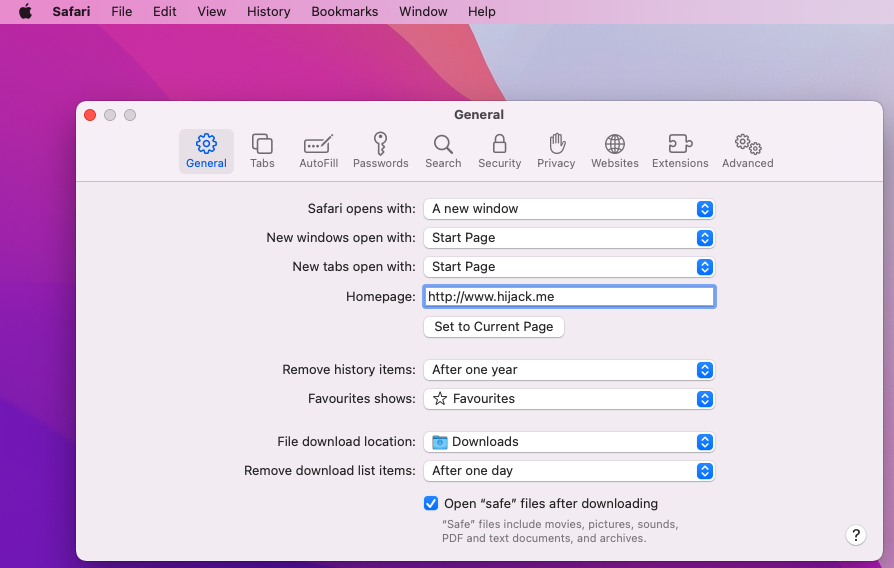

- Then go to the Extensions tab and make sure there are no unknow extensions installed.
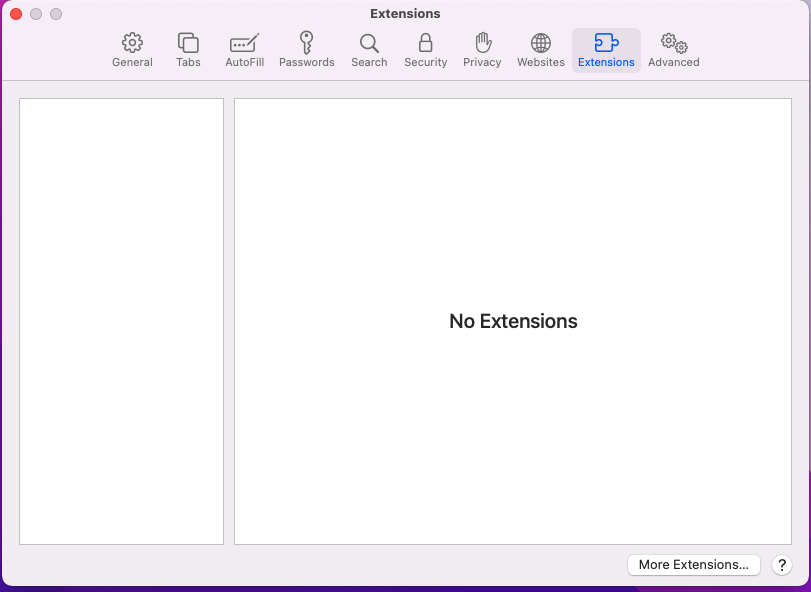

- Next step is to click on Privacy tab
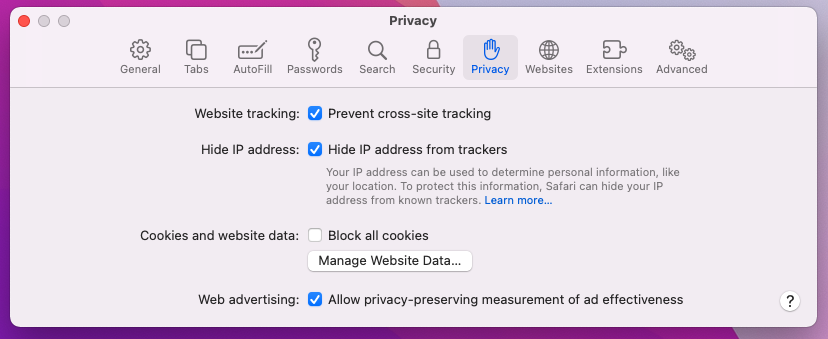

- Manage website data


- Here you can remove any unwanted website data or just remove them all. Please, keep in mind that after you do this all stored website data will be deleted. You will need to sign-in again for all websites that require any form of authentication.
- The next step is to Clear History (if you want), select the tab.


- Click the menu next to clear and choose a time period — if you want to completely reset Safari, choose all history.
- Press Clear History
- To remove from Chrome, open the browser and click the icon with the three dots located in the top-right.
- Select to More Tools --> Extensions and review what Chrome Extensions are present in the browser


- Remove the ones that you do not recognize.
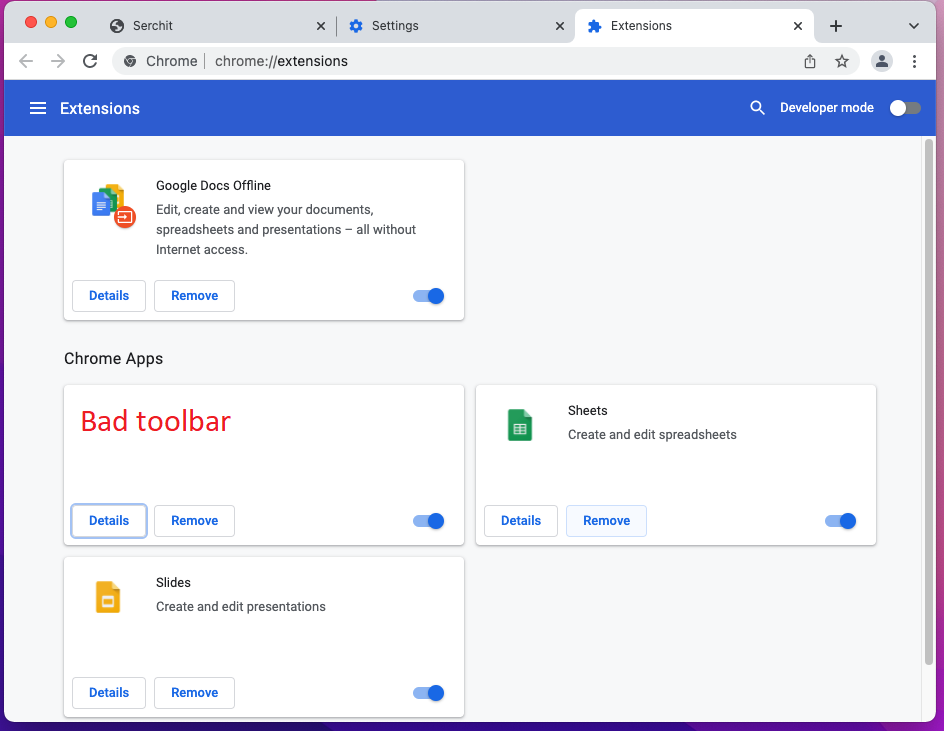

- If the parasite continues to disrupt your browsing with Chrome, this is what else you can do:
- Click again the menu of Google Chrome, and open Settings.
- Select the Search Engine from the left panel, review the available search engines and change the default to your preference.


- Then, click on Manage Search Engines, review the list of search engine availabilities and if any of the listed items looks suspicious, click the three-dots next to them, and delete.


- Click on Privacy and Security in the left panel, select the Clear browsing data option, check every box except the Passwords one, and click Clear Data.


- Next step is to clear Notifications, select the Site settings option in the Privacy and Security section, then locate Notifications.


- Review the listed websites in the Allow to send notifications section and if any of the entries shown there seem dubious or related to the browser hijacker, select the three dots next to the object and click on Remove.
- Start Mozilla Firefox
- On the top right click the three dashes
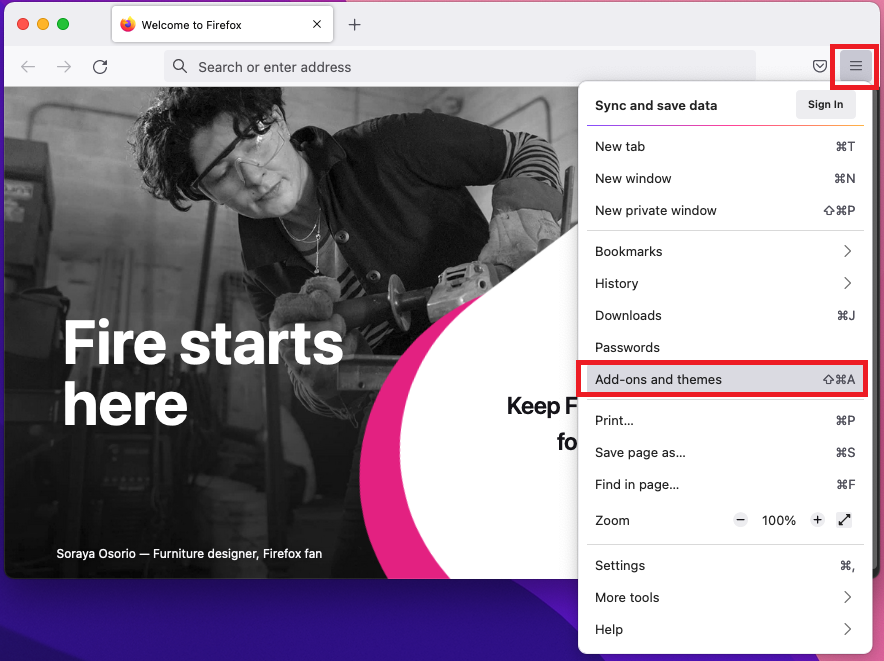

- go to add-ons and themes
- The add-ons manager will open
- Carefully review review four Firefox Extensions
- If any unwanted extension is present, click on the three horizontal dots and then Remove
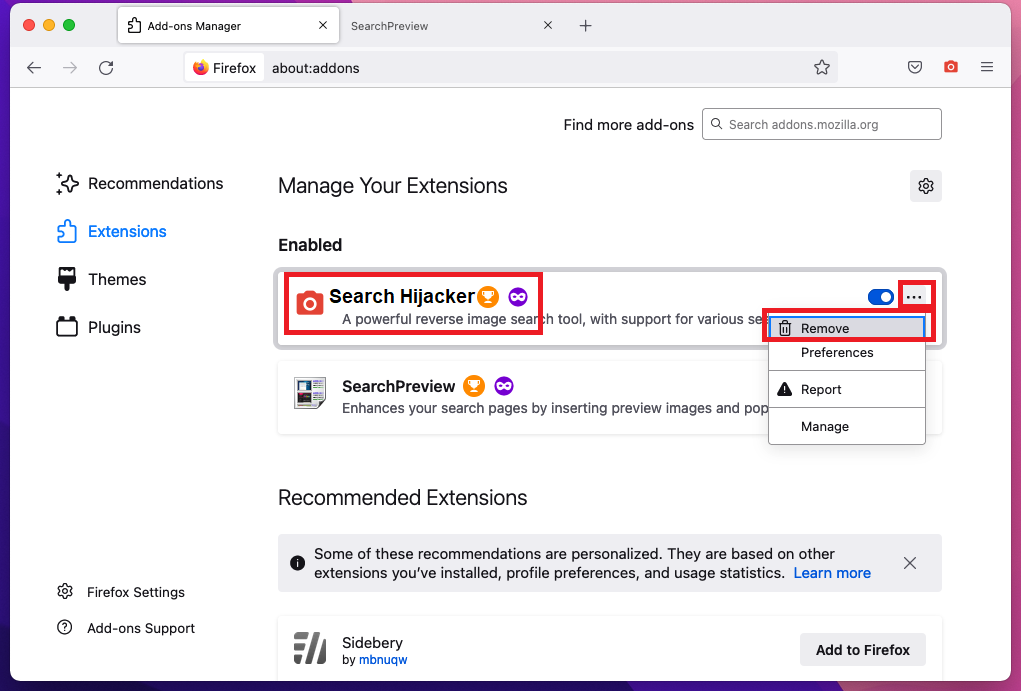

- After the extension is removed, restart Mozilla Firefox by closing it from the red dot in the top left and start it again.
Step 3: Scan for and remove Nearbyme.io files from your Mac
Fix your browser settings with SpyHunter Anti-Malware
Once you download and install SpyHunter for Mac run a scan.
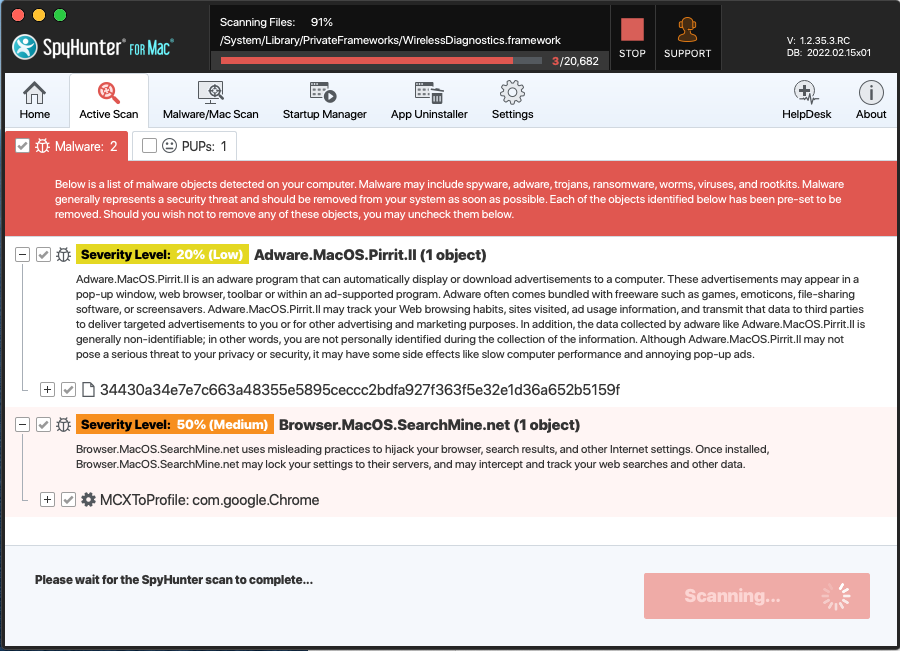

Once the scan is complete, your mac will be virus free.
Nearbyme.io malware Frequently Asked Questions:
- How do I get rid of Nearbyme.io?
Nearbyme.io is a Browser hijacker – malicious software that can be installed by third-party applications or websites. They usually change the settings of web browsers and search engines to display certain ads, pop-ups, banners, etc.
- What are the symptoms of Nearbyme.io infection in your Mac?
Nearbyme.io becomes your web browser’s built-in search engine.
Your browser’ s search queries are redirected through Nearbyme.io.com
The “Nearbyme.io” browser extension or some shady software is installed on your Mac.
- How do I remove Nearbyme.io from my browser?
In Internet Explorer, click the gear icon on the top left and select Manage add-ons. Under Add-on Types, select Search Providers. Select your search engine from the list of providers and click Remove to remove it. In Google Chrome, go to Settings (at the top right) and choose Search in the On Startup drop down menu.
- How do I uninstall Nearbyme.io?
How to Make Your Mac Run Faster?
You might be wondering how to make your Mac run faster? It is a common misconception that the more processing power you have, the faster your computer will run. In reality, it’s actually about what’s going on in your processor and memory. For the average person using a computer for just general applications like word processing and web browsing, you don’t need much in the way of computing power.
– Use an SSD drive instead of a hard disk drive.
– Double your RAM if possible.
– Disable System Integrity Protection (SIP). (Attention! – do this only if you know the consequences.)
References:
- More about pop-up advertisements on Wikipedia.
- MacOS malware
- SpyHunter Anti-Malware overview and also the reasons why we recommend it for malware elimination.
Please, have in mind that SpyHunter offers a free 15-day Trial version with full functionality. Credit card is required, no charge upfront.

